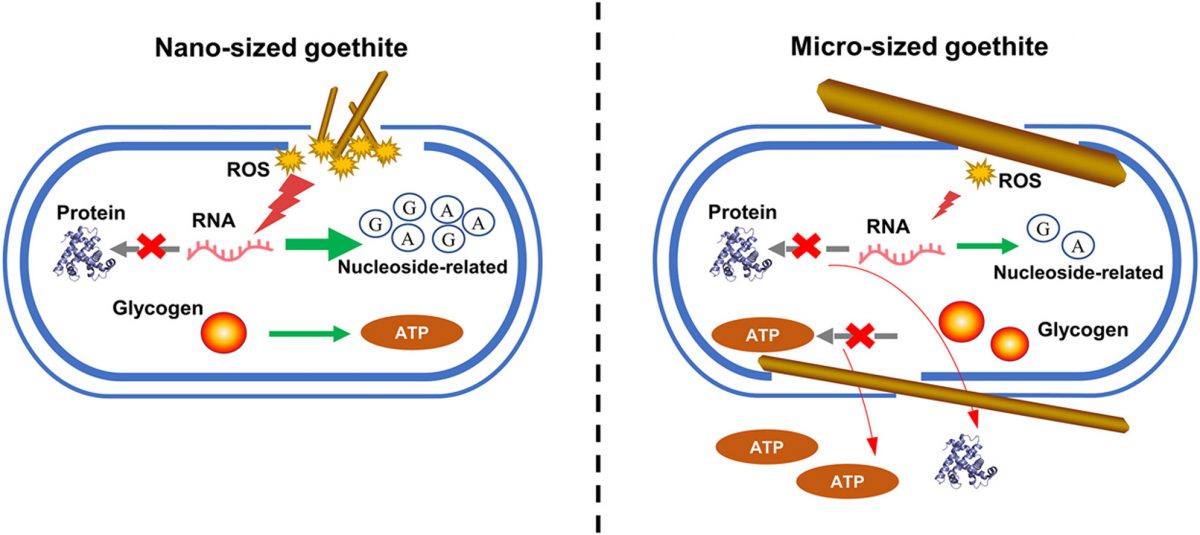Highlights
Micro-sized goethite exhibited a more effective antibacterial activity than the nano-sized counterparts.
Goethite caused RNA and membrane damages which inhibited protein synthesis and affected energy metabolism.
Antibacterial mechanisms of nano-sized goethite were mediated by both ROS-dependent damage and cell membrane destruction.
Micro-sized goethite induced more severe membrane damage and less ROS-dependent oxidative stress.
Abstract
The persistence of Escherichia coli O157:H7 in soil is one of the most common causes of the food-borne outbreaks. Nano-sized iron oxide minerals in soil, especially goethite, have been found to reduce bacterial viability, which helps to control the spread of human pathogens. However, little is known about the antibacterial effects of iron oxides with different particle sizes. Our result revealed that the micro-sized goethite exhibited a more effective antibacterial activity against E. coli O157:H7 than the nano-sized goethite. The underlying antibacterial mechanisms were further investigated via single-cell Raman microspectroscopy. The exposure to nano-sized goethite increased the levels of ribonucleoside-related substances, phenylalanine and adenosine 5′-triphosphate, while decreased those of glycogen, protein and lipopolysaccharide & outer membrane porins (LPS & OMPs). Meanwhile, micro-sized goethite triggered less variation in ribonucleoside-related substances and induced more reduction in LPS & OMPs. Therefore, the antibacterial effects of nano-sized goethite were mediated by both ROS-dependent RNA damage and cell membrane destruction, whereas micro-sized goethite induced severer membrane damage and less ROS-dependent oxidative stress. This work demonstrates the role of particle sizes in antibacterial effects of iron oxides and provides implications for the pathogen control in soil.

全文链接:https://doi.org/10.1016/j.jhazmat.2020.124174